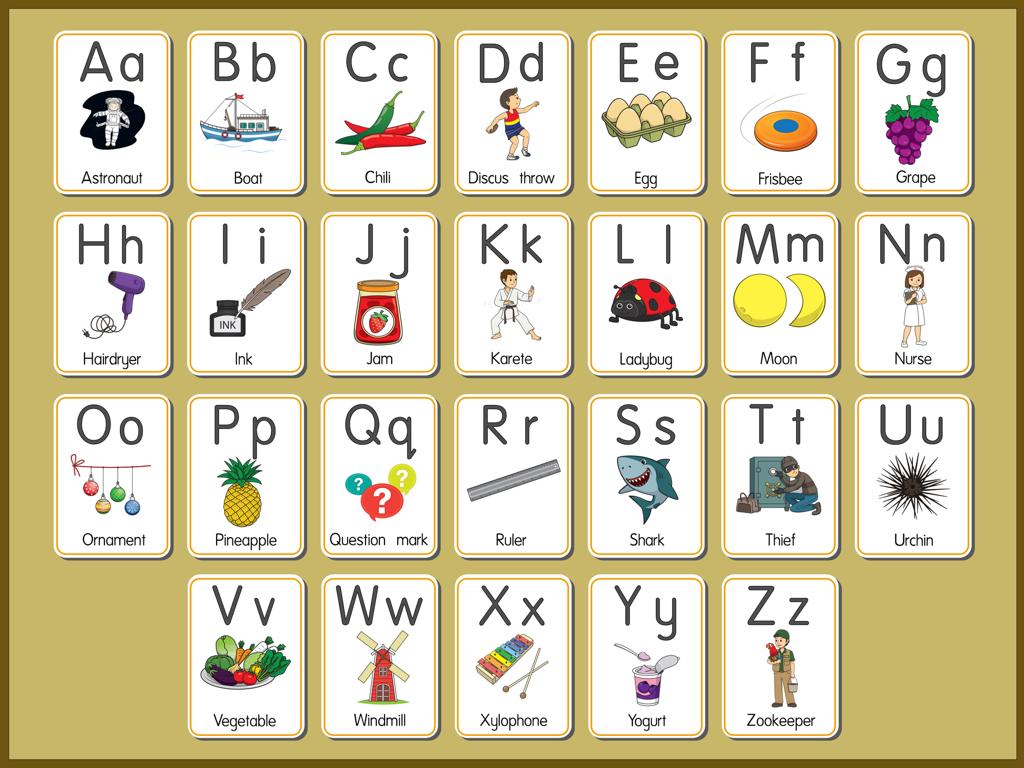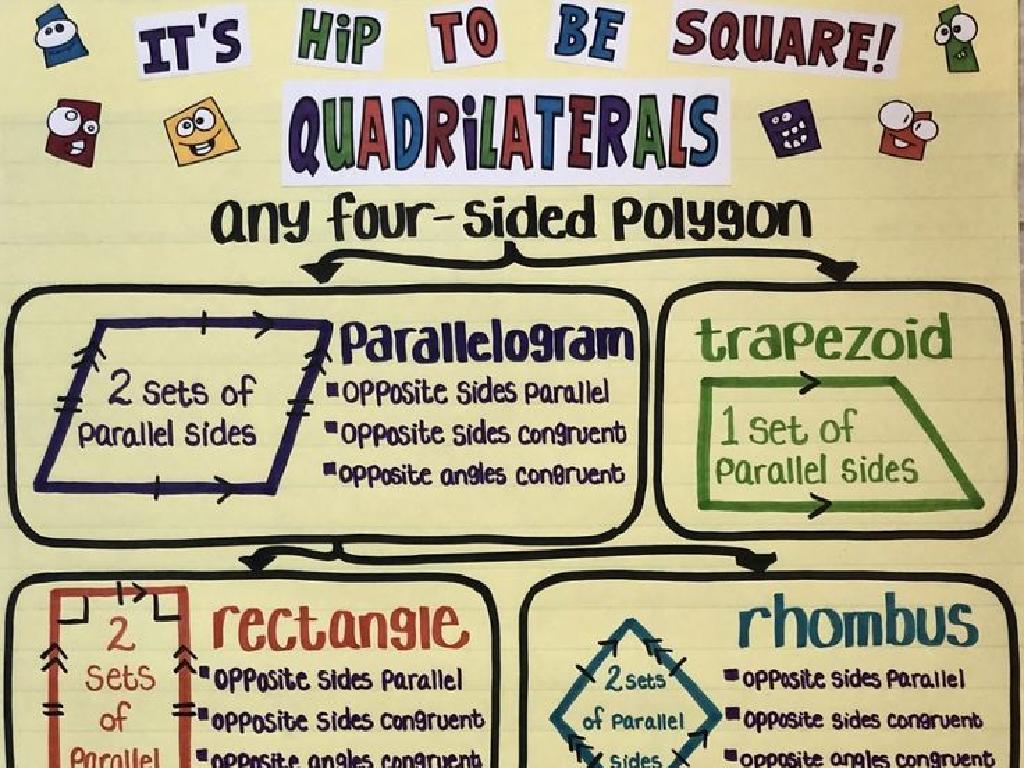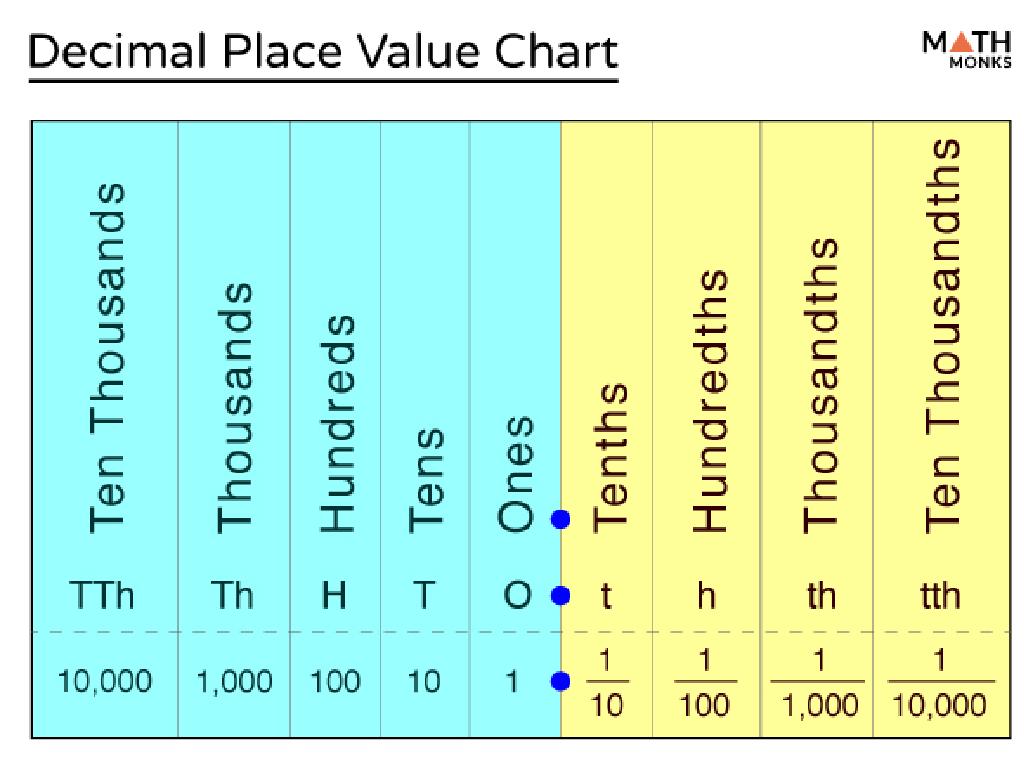Volume Of Pyramids
Subject: Math
Grade: Seventh grade
Topic: Surface Area And Volume
Please LOG IN to download the presentation. Access is available to registered users only.
View More Content
Exploring the Volume of Pyramids
– Understanding 3D shapes
– 3D shapes have length, width, and height
– Defining volume
– Volume measures space inside a 3D shape
– Volume in daily life
– E.g., pools, packaging, and buildings
– Calculating pyramid volume
– Use the formula: (1/3) x base area x height
|
This slide introduces the concept of volume within the context of three-dimensional shapes, specifically pyramids. Start by explaining the attributes of 3D shapes, emphasizing that unlike 2D shapes, they have depth. Then, define volume as the measure of space inside a 3D object, which can be filled with liquids or solids. Provide relatable examples such as the amount of water a pool can hold or the space available inside a package. Conclude by showing how to calculate the volume of a pyramid using the formula, ensuring to explain that the base area can be found by multiplying the length by the width of the base. Encourage students to visualize the concept by thinking of filling the pyramid with sand or water.
Exploring Pyramids: Understanding the Basics
– What is a Pyramid?
– A 3D object with a polygon base and triangular sides that meet at an apex.
– Pyramid Components
– Base: the bottom; Faces: the sides; Apex: the top point.
– Varieties of Pyramids
– Square-based, triangular-based, and more, each with unique properties.
– Significance in Volume Calculation
|
This slide introduces students to the concept of pyramids within the context of geometry. Begin by defining a pyramid as a three-dimensional shape with a polygonal base and triangular faces that converge at a single point called the apex. Discuss the different components of a pyramid, including the base, faces, and apex, and how they contribute to the structure’s overall shape. Explore the various types of pyramids, such as square-based and triangular-based, and highlight how the base shape affects the pyramid’s properties. Emphasize the importance of understanding these fundamentals as they are crucial for calculating the volume of pyramids, which will be covered in subsequent lessons. Engage students by showing examples of pyramids in architecture and nature to make the lesson more relatable.
Volume of a Pyramid
– Volume formula for pyramids
– (1/3) x Base Area x Height gives pyramid volume
– Understanding the 1/3 in the formula
– 1/3 accounts for the pyramid’s tapering shape
– Calculating base area
– Base area is length x width for square base
– Units used for volume
– Volume is expressed in cubic units, e.g., cm³
|
Introduce the formula for finding the volume of a pyramid and explain each component. Emphasize the (1/3) factor, which accounts for the pyramid’s tapering shape compared to a prism. Discuss how to calculate the base area, which varies depending on the shape of the pyramid’s base (e.g., square or triangle). Finally, clarify that volume is measured in cubic units, reinforcing the concept of three-dimensional space. Provide examples and encourage students to practice with different pyramid dimensions to solidify their understanding.
Calculating the Base Area of Pyramids
– Identify the base shape
– The base can be square, rectangular, etc.
– Learn the area formula
– Area of square = side^2, rectangle = length x width
– Example: square base area
– If a pyramid has a base side of 4 units, area = 4^2 = 16 units^2
– Practice with different bases
|
This slide is focused on teaching students how to calculate the base area of a pyramid, which is the first step in finding the volume. Start by identifying the shape of the base, which could be a square, rectangle, triangle, or other polygons. Then, present the formula for calculating the area of that shape. For example, the area of a square base is found by squaring the length of one of its sides. Provide an example calculation for a square base, and encourage students to practice with different base shapes to solidify their understanding. Remind them that the base area is crucial for calculating the pyramid’s volume later on.
Calculating the Volume of a Pyramid
– Step-by-step volume calculation
– Follow the formula: Volume = (1/3) * base area * height
– How to find the pyramid’s height
– Use a right triangle to determine the slant height, then the pyramid’s height
– Insert values into the formula
– Base area and height are plugged into the formula
– Example: Volume of a pyramid
– For a pyramid with a base area of 30 cm² and height of 10 cm, Volume = (1/3) * 30 * 10
|
This slide guides students through the process of calculating the volume of a pyramid. Start by explaining the volume formula for a pyramid, which is one third of the base area multiplied by the height. Emphasize the importance of understanding how to find the height, which may involve using the Pythagorean theorem if the slant height is given. Provide an example with actual numbers to demonstrate how to plug values into the formula and solve. Encourage students to work through the example with you, and then try additional problems on their own or in small groups.
Volume of Pyramids: Practice Problems
– Calculate volume of square-based pyramid
– Use formula: Volume = (1/3) * base area * height
– Calculate volume of triangular-based pyramid
– Use formula: Volume = (1/3) * base area * height
– Discuss solutions collectively
– Share different approaches and answers
|
This slide is aimed at providing students with practice problems to apply their knowledge of finding the volume of pyramids. Problem 1 focuses on a square-based pyramid, where students will use the formula Volume = (1/3) * base area * height, with the base area being the square of one side of the base. Problem 2 deals with a triangular-based pyramid, applying the same volume formula but calculating the base area using the formula for the area of a triangle. After attempting the problems, the class will discuss the solutions together, allowing students to learn from each other’s methods and correct any misunderstandings. Encourage students to explain their reasoning and how they arrived at their answers. This collaborative discussion fosters a deeper understanding and helps students to see a variety of ways to approach the problems.
Real-World Application of Pyramid Volume
– Pyramids in modern architecture
– Think the Louvre Museum, glass pyramid
– Volume calculation for construction
– How much space inside? Needed for planning
– Design influenced by volume
– Volume determines space usage and structure stability
– Class activity: Design a model pyramid
|
This slide aims to show students the practical applications of calculating the volume of pyramids in real-world scenarios, particularly in architecture and construction. Discuss how iconic structures, like the glass pyramid at the Louvre, are examples of pyramids in modern design. Explain that understanding the volume is crucial for architects when planning the interior space and for engineers to ensure the stability of the structure. For the class activity, students will design their own model pyramid, calculating the volume to ensure it’s proportional and structurally sound. Provide guidelines for the activity, such as using graph paper for design, calculating scale, and considering materials for construction. Offer different challenges for varying levels of student ability, such as designing for maximum volume or for specific purposes like a museum or a greenhouse.
Class Activity: Build a Paper Pyramid
– Gather materials: paper, scissors, tape
– Follow instructions to build a pyramid
Step-by-step guide to create a model pyramid
– Calculate your pyramid’s volume
Use the formula: Volume = (1/3) * base area * height
– Reflect on the activity
Discuss what you learned about volume
|
This hands-on activity is designed to help students understand the concept of volume through a practical exercise. Provide students with paper, scissors, and tape to construct their own pyramids. Once built, guide them through the process of calculating the volume using the formula for the volume of a pyramid. Encourage students to measure their pyramid’s base and height accurately. After the calculation, have a discussion about their findings and what challenges they faced. This will reinforce their understanding of volume and how it applies to three-dimensional shapes. Possible variations of the activity could include using different types of pyramids (triangular, square base) or comparing the volume of pyramids to other shapes like cubes or prisms.
Volume of Pyramids: Recap & Importance
– Recap: Volume formula for pyramids
– V = 1/3 * base area * height
– Understanding volume is crucial
– It’s essential for real-life applications like construction and storage
– Encourage class questions
– Clarify any doubts
|
As we conclude today’s lesson on the volume of pyramids, it’s important to revisit the formula V = 1/3 * base area * height. Emphasize the practicality of understanding volume in fields such as architecture and various engineering disciplines. Encourage students to ask questions about any part of the lesson they may not have understood fully. Offer additional examples or explanations as needed to ensure that all students are comfortable with the concept before moving on. Remember, the goal is for students to not only memorize the formula but also to understand its application and relevance.






